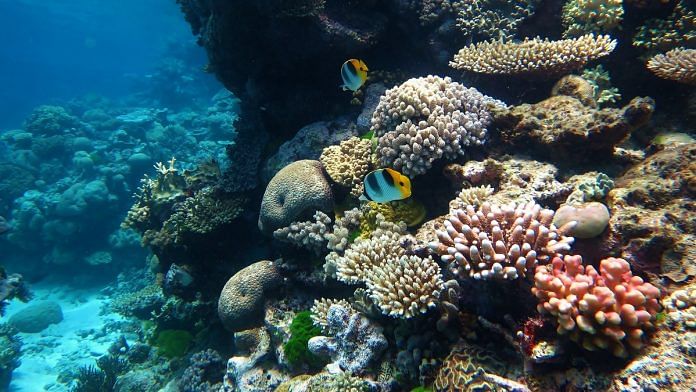Great Barrier Reef at risk of another mass bleaching event
Australia’s Great Barrier Reef is showing signs of heat stress in several coral regions, increasing the chances of another major bleaching event.
The Great Barrier Reef Marine Park Authority has reported that a prolonged period of warmer than usual ocean currents has raised temperatures by up to 2 to 3 degrees Celsius above average for the month of February.
The iconic reef, which runs 2,300 kilometres down Australia’s north eastern coast has only just begun to recover after being heavily hit by two consecutive years of coral bleaching in 2016 and 2017 — both of which were among the warmest years on record. Read more about it in here.
New method to deflect asteroids from hitting earth
Scientists at the Massachusetts Institute of Technology (MIT) have devised a new method to successfully deflect an incoming asteroid that has the potential to collide with earth.
The new method takes into account an asteroid’s mass and momentum, as well as the amount of warning time that scientists have of an impending collision to help identify the most successful mission to deflect a given asteroid.
The MIT scientists tested their application on two near-earth asteroids, Apophis and Bennu, to lay out the type of mission that would likely have the most success in deflecting these two bodies. More about it here.
NASA reveals details of most distant object ever visited
NASA has unveiled details of the most distant object ever visited by a spacecraft. It is a reddish, peanut-shaped object called Arrokoth situated over 6.6 billion kilometres from the sun.
Located in the Kuiper belt, a region beyond Pluto that has dwarf planets and icy objects, Arrokoth may help scientists resolve a decades-long puzzle about how the first planets of the early solar system emerged.
Analysing results from NASA’s New Horizons spacecraft, which made a flyby on New Year’s Day in 2019, scientists have found that Arrokoth’s two lobes came together very gently and stuck, rather than in a high speed collision. More about it on The Guardian.
World’s oldest salamander discovered
Scientists have discovered the fossil of what may be the world’s oldest salamander, a 167-million-year-old specimen found in Siberia.
The team of Russian and German researchers have discovered four fossilised backbones of the ancient salamander, including a part of the spine that allows the head to nod.
Known as Egoria Malashichev, the eight-inch salamander likely swam with other sea creatures such as massive sharks, giant sea lizards and enormous scorpions.
The fossils were unearthed from a quarry where other prehistoric creatures, including dinosaurs, reptiles, fish and mammals have been previously found. Read more here.
Also read: Lung scan — new diagnostic criteria that led to surge in China’s coronavirus cases



